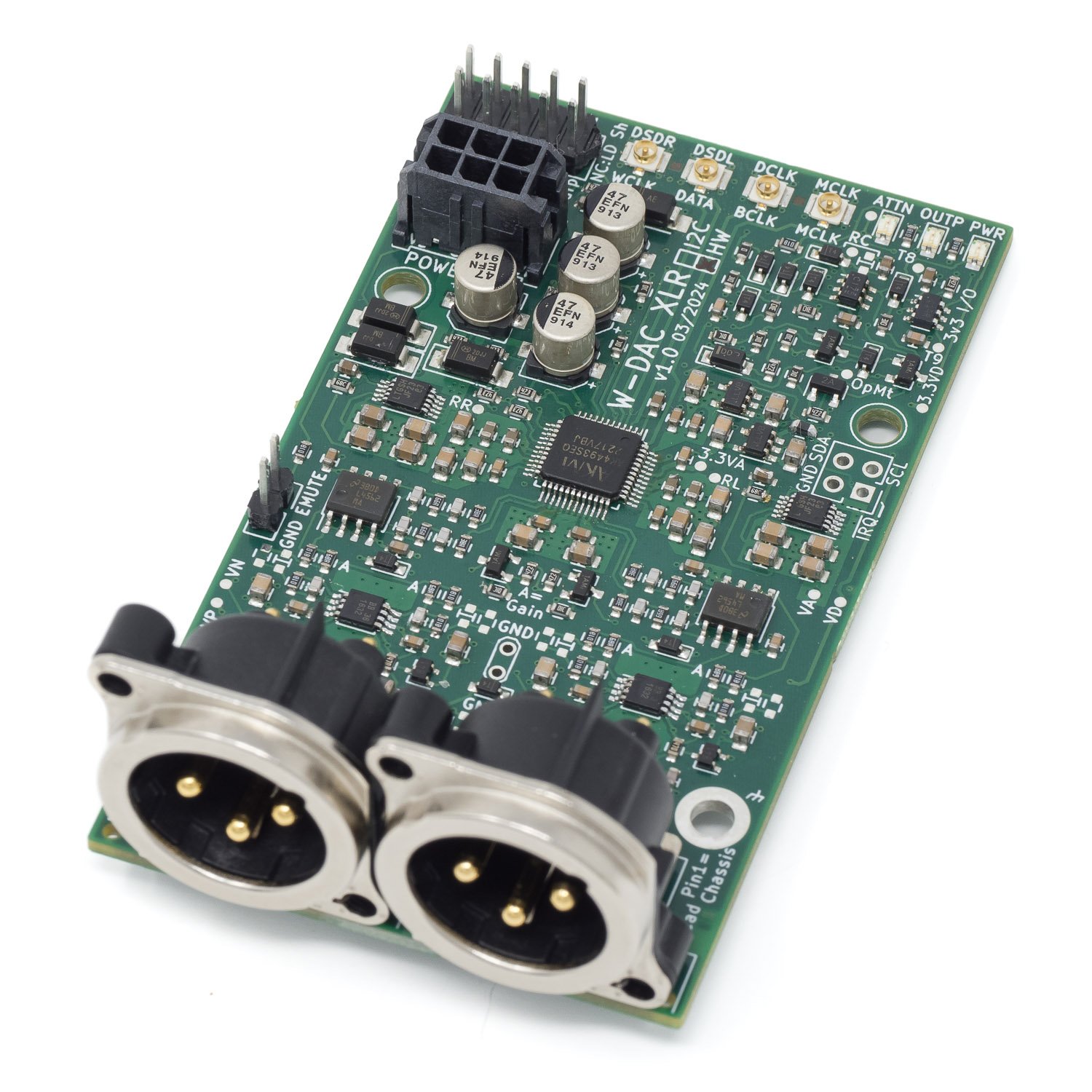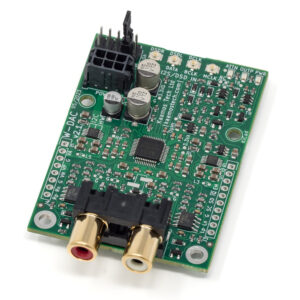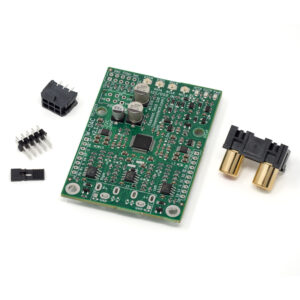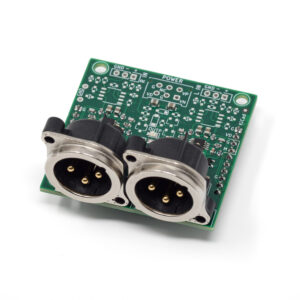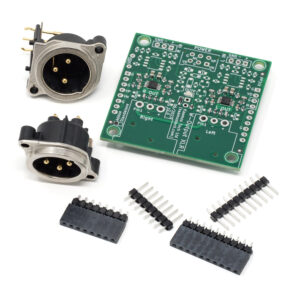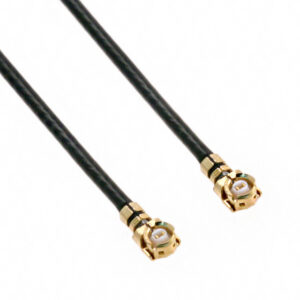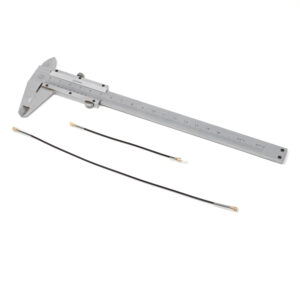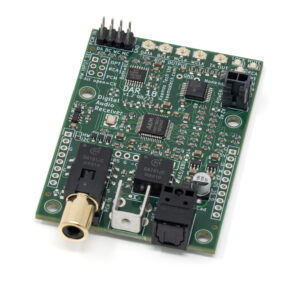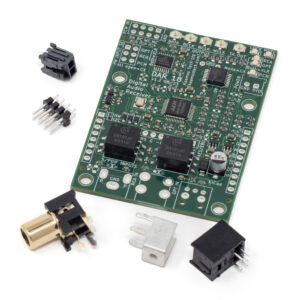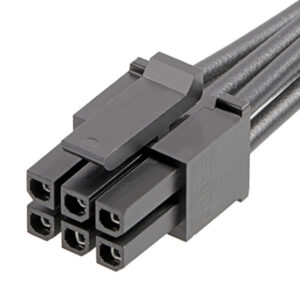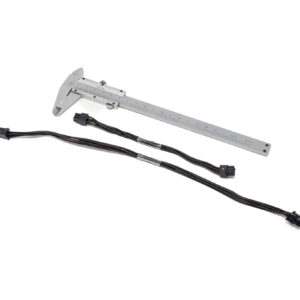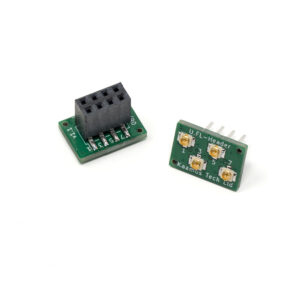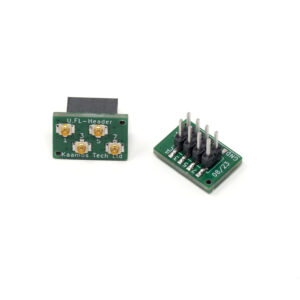W-DAC XLR – Very High Performance Compact Balanced Audio DA-Converter
The design is based on W-DAC v2 where the output stage is replaced with a fully differential output stage. This board will replace the W-DAC v2 and the XLR add-on.
- Excellent performance, typical:
- THD+N ratio: -116 dB (997 Hz -1 dBFS)
- THD ratio: -122 dB (997 Hz, -1 dBFS)
- Dynamic range / SNR: 122 dBA
- Crosstalk: < -130 dB, 10 kHz
- Balanced XLR output, 4 Vrms output level
- Can be adjusted by adding/changing resistors
- DC-coupled output path (no DC-blocking capacitors in audio path)
- DC-offset typically up to 3mV but can be up to 5mV; see notes in the measurements tab
- AK4493SEQ DAC, LM4562 and OPA1632 opamps, LT3042 regulators, thin film resistors and C0G capacitors in audio path
- Compact 85 mm x 50 mm 4-layer PCB
- PCM up to 32 bits and 768 kHz sample rate
- I2C-version supports DSD up to DSD512
- Selectable digital filter (via jumper link in HW-version, via registers in I2C-version)
- Hardware output mute with relay (automatic, can also be manually muted)
Requires following supplies (indicated max current):
- 5V for digital (35 mA)
- +/- 12-15V (55 mA per supply) for opamps
- 6V for DAC references and analog supplies (40 mA)
- This can also be taken from +15V (connecting outside the board or soldering ferrite beads or 0R on board; this increases VP current to 75mA)
- All supplies provided via one 6-pin Molex Micro-Fit for easy interfacing with our power supplies
Features
Common features for both HW- and I2C-variant:
- Identical performance
- Hardware output mute
- Automatic supply monitoring reduces loud pops at start-up and power-down when connected directly to a power amplifier
- External mute input can be used to engage mute from an external source (e.g. from DAR 18 S/PDIF receiver)
HW-variant features
- Easy to use, no microcontroller needed
- Digital filter selection with jumper link

I2C-variant features
- Needs an I2C-host, for example microcontroller
- Digital filter and all other settings, including digital volume control, done via registers
- DSD-support
- We do not provide a control firmware but there are very simple example writes in the W-DAC XLR guide

Important information on order
- All SMD components are soldered down and the board is fully tested, connectors and headers are soldered if selected.
- Please ensure you have the skills to solder the remaining components and wires to connect the board in your system – and most of all understand what you are doing. Especially pay attention you have the correct power supplies and signal levels.
- Be careful with supply polarity and level, incorrect connections may damage the board and/or your power supply.
- If you need help prior to purchase, please contact us.
Order contents
By default, connectors and headers are delivered unsoldered.
HW-version:
- Fully tested board with all SMD components populated
- 6-pin Molex power connector
- 2×5 male pinheader + one jumper link for digital filter selection
- 1×2 male pinheaded for EMUTE input
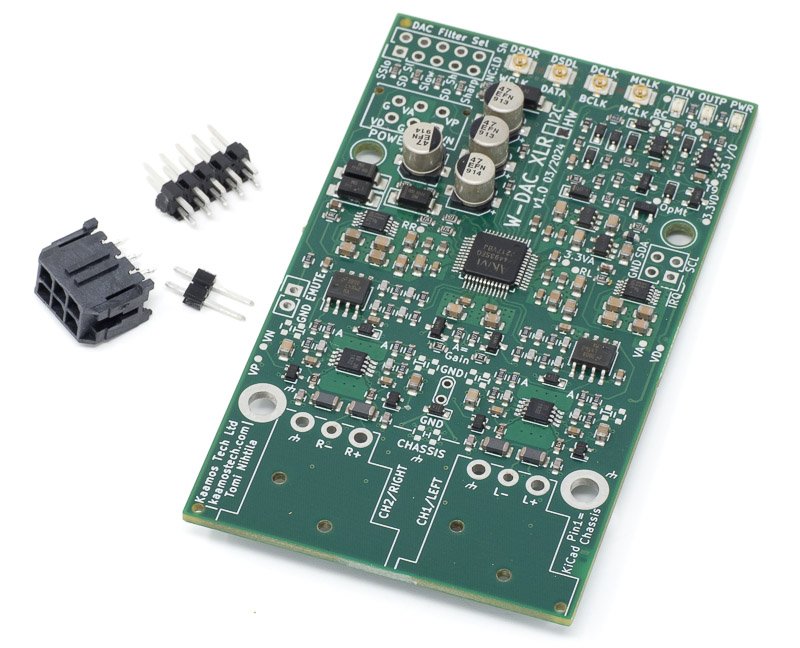
I2C-version:
- Fully tested board with all SMD components populated
- 6-pin Molex power connector
- 2×2 male pinheader for I2C and IRQ
- 1×2 male pinheaded for EMUTE input
- 3pcs 0R resistors for changing I2C-address

Changes from W-DAC v2
W-DAC XLR is based on W-DAC v2 which was used as a starting point for the design – and most parts of the PCB remain identical. Some changes to mention:
- More symmetric and simplified fully balanced output path gains small performance improvement – and reduced cost and complexity compared to W-DAC + XLR add-on.
- Power supply inputs have added protection components.
- Due to these changes and removal of the edge headers (where W-DAC v2 XLR add-on stacks onto), the PCB layout around the supply input and output stage has changed quite significantly.
- I2C-version does not have the attenuation relays the W-DAC v2 I2C has.
- There are placeholders on the PCB but these were removed last minute because they did not add enough improvement anymore. It would improve DR a few dB when engaged but the extra loading deteriorated THD slightly in this circuit.
- Lots of small changes throughout the board.
The functionality of the board remains the same. Measured performance is slightly better than W-DAC v2, mainly due to one less opamp stage compared to the W-DAC v2 + XLR add-on. The new board is 15mm longer due to XLRs.
More information
For more information on using the board, see W-DAC XLR guide. There is also a post on how to connect DAR 18 and W-DAC. As this XLR-version is functionally identical to the W-DAC v2, these instructions apply despite being written for the W-DAC v2.
For measurement results and version history, see the tab above.
There is also a video showing the board, its features, and how it is connected to other boards:

